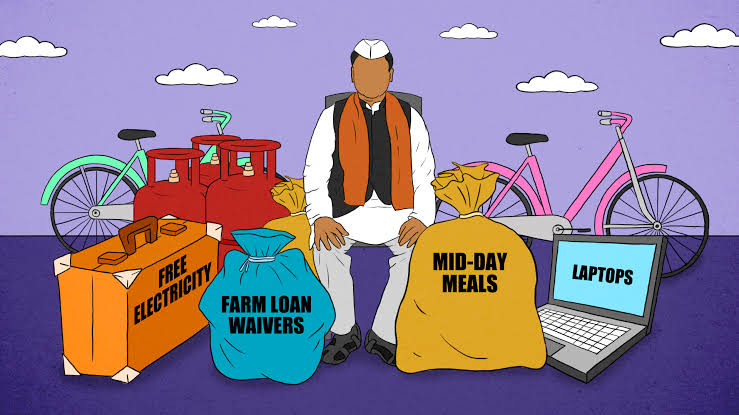Freebies in Indian Politics: A Shortcut to Votes or a Hindrance to Progress?
3 min read
K.K. Jha
The politics of “freebies” has reshaped India’s electoral dynamics, emerging as a powerful tool to secure votes and influence public opinion. While these schemes often provide immediate relief to marginalized communities, they raise important questions about their long-term impact on the country’s progress and fiscal health.
The culture of offering freebies in India is not a recent phenomenon. In the post-independence era, initiatives like land reforms, the Public Distribution System (PDS), and agricultural subsidies were designed to alleviate poverty and uplift the rural economy. However, the 1967 elections marked a turning point, with political parties increasingly using targeted giveaways as a means to gain political leverage. Tamil Nadu, under its Dravidian parties, pioneered this strategy, offering free rice, sarees, and even household appliances as part of their electoral promises.
By the 1990s, this approach had spread nationwide, becoming an integral part of political campaigns. The 2008 farm loan waiver by the UPA government set a new benchmark for large-scale giveaways, opening the floodgates for a wide array of promises, from free laptops and subsidized utilities to cash transfers. Today, such promises dominate political manifestos, often overshadowing discussions about structural reforms and long-term development.
The cost of these freebies has placed an enormous strain on the exchequer. In the fiscal year 2023-24, subsidy expenditure was projected to exceed ₹4.53 trillion, encompassing food, fertilizers, and petroleum. Cash transfer schemes, such as those targeted at women voters, are expected to cost over ₹1 lakh crore annually. States like Rajasthan and Punjab, already burdened with high debt-to-GDP ratios, are struggling to sustain such expenditures. Rajasthan’s women-centric cash transfer program alone consumes 14% of its total revenue, while similar trends are evident in Karnataka, Madhya Pradesh, and Tamil Nadu. These expenditures leave little room for investments in critical areas like education, healthcare, and infrastructure.
The opportunity cost of such policies is stark. Public health spending in India remains at just 2.1% of GDP, far below the global average of 6%. Education, a cornerstone of sustainable development, is similarly underfunded, as are sectors like infrastructure and research and development. India’s R&D investment, for instance, stands at a mere 0.64% of GDP, lagging significantly behind global leaders like China and the U.S. States heavily reliant on subsidies are also grappling with mounting debts, limiting their ability to foster industrial growth and job creation.
Globally, countries like China and Vietnam demonstrate the benefits of prioritizing long-term investments over short-term populism. China’s focus on infrastructure development, which accounts for nearly 8% of its GDP, has driven urbanization and created millions of jobs. Vietnam’s emphasis on education and skill development has lifted countless citizens out of poverty, serving as a model for sustainable progress.
While it is unrealistic to expect an abrupt end to freebies in India, a more balanced and targeted approach is essential. Instead of blanket subsidies, governments could offer schemes that empower citizens and promote self-reliance. For example, replacing free electricity with incentives for solar power adoption or providing healthcare vouchers instead of direct cash transfers could achieve better outcomes. Additionally, welfare programs must include performance metrics to ensure accountability and prevent misuse.
India stands at a crucial juncture where it must decide between the allure of short-term electoral gains and the promise of sustainable development. Freebies can provide temporary relief, but they also risk derailing the nation’s progress if not implemented judiciously. It is imperative for political parties to rise above populist temptations and craft visionary policies that prioritize education, healthcare, and infrastructure.
The question remains: Can India strike the right balance between immediate welfare and long-term growth? The answer will shape the nation’s future trajectory.







